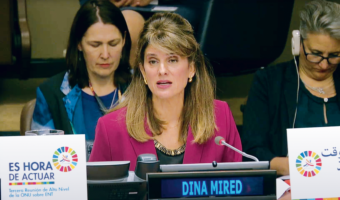The Covid-19 pandemic has been like an earthquake striking a rickety US childcare system. A sector that already didn’t work for anyone involved – enormously expensive for parents, incredibly low wages for practitioners, highly questionable quality for children – has been brought to its knees (Mongeau, 2020). Based on survey data, interest groups such as the National Association for the Education of Young Children (NAEYC) estimate that the USA may permanently lose between one-third and one-half of its childcare supply.
As a result, many organisations have begun to talk about rebuilding a new, better system; as the CEO and the managing director of policy and professional advancement of NAEYC wrote:
If our economy is to recover, it will require a reimagined approach to financing and structuring the systems that support high-quality child care. (Allvin and Hogan, 2020)
One state, Hawaii, has taken an innovative angle to this question: the Hawaii State Commission on the Status of Women has published a plan that explicitly calls for a ‘feminist’ economic recovery, with an effective and equitable childcare system as a key component. The plan – Building Bridges, Not Walking on Backs: A feminist economic recovery plan for COVID-19 – states:
The road to economic recovery should not be across women’s backs. COVID-19, and the measures being implemented to contain it, are deeply affecting our social and economic relationships here in Hawai’i and beyond … The cheap value of caregiving is not natural, but has political origins. Caregiving, associated with and expected of women, is necessary for economic production to take place and yet it is split off from economic production, thereby structurally subordinating women in society. … Rather than rush to rebuild the status quo of inequality, we should encourage a deep structural transition to an economy that better values the work we know is essential to sustaining us. (Hawaii State Commission on the Status of Women, 2020)
The plan calls for childcare to be universal, free, and publicly provided, with pay parity between early childhood educators and public school educators. It also calls for complementary programmes such as paid family leave. Given that no US state has anything approaching a universal, free childcare system – and of the 2020 Democratic Presidential primary candidates, only Senator Bernie Sanders called for such an approach – this is a welcome and bold goal. While the report doesn’t go into detail, such as how such a system would be funded or how quality would be ensured, it moves the conversation towards a new way of thinking about what society owes women and children.
Taking a feminist approach to rebuilding a quality childcare system, while righting gender inequities, can support child development and school readiness in three ways:
- Research clearly shows that parental stress levels are deeply correlated with child outcomes. As an article in the New York Times noted:
Parents in the United States have nearly doubled the time they were spending on education and household tasks before the coronavirus outbreak, to 59 hours per week from 30, with mothers spending 15 hours more on average than fathers, according to a report from Boston Consulting Group. (Cohen and Hsu, 2020)
The increasing strain on mothers’ shoulders from childcare responsibilities is not conducive to the goals of early education.
- Lack of access to childcare keeps women out of the workforce – and many families on low-to-moderate incomes cannot afford to enrol their children in quality programmes. A 2019 report from the Center for American Progress found that:
Mothers who were unable to find a child care program were significantly less likely to be employed than those who found a child care program, whereas there was no impact on fathers’ employment.
(Schochet, 2019)
- More than 90% of childcare workers are female, and many are mothers to young children themselves (Becker, 2020). Given that an estimated one-third of childcare workers have already lost their jobs as a result of the pandemic, and the sector had more than 2 million practitioners, hundreds of thousands of families have been impacted. As these tend to be low-paying jobs, an approach to childcare that increases the salaries and status of childcare workers will benefit the same families.
It is nearly impossible to separate out childcare and women’s issues, yet often the field does not take an explicitly feminist approach in strategy or language. Hawaii offers a promising example of how free, quality childcare can be a keystone policy in finally valuing care work and ensuring equity for mothers.
References can be found in the PDF version of this article.



